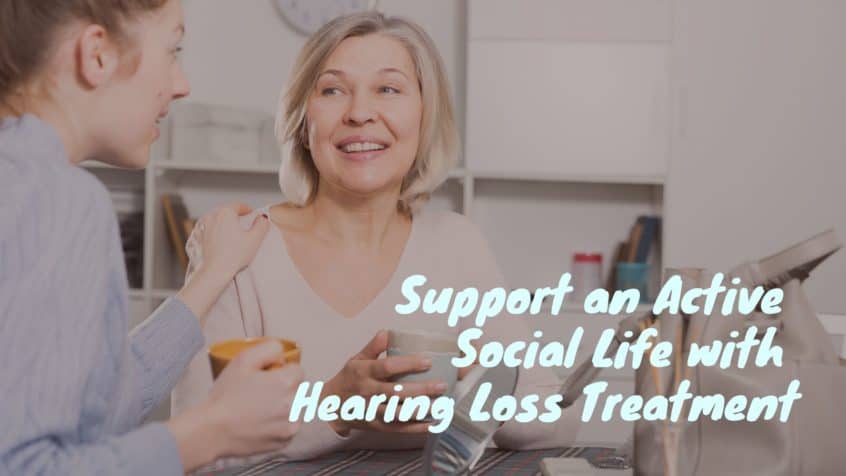Support an Active Social Life with Hearing Loss Treatment

It’s been a rough year, but with more and more people getting vaccinated against the COVID-19 virus, we’re starting to appreciate the weather warming up and getting out of the house again! Those with hearing issues have struggled especially with issues related to face masks and social distancing: face masks prevent us from reading lips while also reducing the volume of the wearer’s voice, and social distancing also works to lower the volume of speech that we receive.
While the CDC has said that the vaccines allow us to get out in the world again and enjoy the kinds of social activities we used to take for granted, masks and social distancing in public spaces won’t be going away any time soon. While some hearing aid manufacturers like Starkey have explicitly focused on models that leave room around our ears for face masks to be worn, it is still worth stressing the importance of getting hearing aids to enhance our hearing once hearing loss becomes an issue.
Hearing Loss Is Undertreated
About 48 million Americans are living with hearing loss today, but not enough of us are wearing hearing aids. On average, people tend to wait seven years from the time they notice hearing loss to the time they pursue hearing aids. That’s a lot of time when hearing loss has a chance to play a role in influencing our lives.
Numerous studies conducted over the years have demonstrated that untreated hearing loss plays a significant role in the loss of social relationships and increased social isolation, but this doesn’t need to be the case. The problem is that hearing loss tends to develop so slowly that we hardly notice it. By the time we have problematic hearing loss, we usually don’t realize just how much sound we’re missing out on. We may not realize that some of the trouble we’re having staying focused on conversations or participating in social activities has to do with our hearing loss. We may think the fatigue that comes over us in social situations is just part of “getting old,” when in fact it is our hearing loss that is draining us of energy.
Regular Hearing Tests Are Recommended
The Better Hearing Institute, a non-profit organization, recommends getting a hearing test once every decade until age 50 and once every 3 years after that. If you’re due for a hearing test, make an appointment and find out if hearing aids could benefit you. Now more than ever, when we finally have the opportunity to enjoy social activities again, it’s a good idea to make sure that you’re able to stay in the conversation and get the most out of the time you spend with others.
Hearing Aid Wearers Report Satisfaction
Overwhelmingly, those who get hearing aids are glad they did. In fact, about 95% of people say they’re happy with their hearing aids, when asked after one year of wearing them. Studies have even shown that those who wear hearing aids tend to be more optimistic, healthier and happier than those with untreated hearing loss. Hearing aid wearers even show a greater tendency to be optimistic about not only their own futures, but about the future of the world at large!
Like most new things we experience, hearing aids come with an adjustment period, but even this has become easier and more comfortable thanks to the advancements in technology that continue to make hearing aids more functional, more effective, and easier to use than ever before. Direct connectivity to smartphones and other devices allows hearing aid wearers to engage with their hearing healthcare providers in real-time through manufacturers’ apps. These apps allow for instantaneous adjustment to ensure that your hearing aids stay comfortable throughout the fitment process and afterward.
As the weather continues to improve and more people get vaccinated, we’re going to be able to spend more and more time out of doors. Getting sun, exercise, and time with friends and family is crucial to our overall health and well-being, and hearing aids are an important part of ensuring that we’re able to stay connected.
